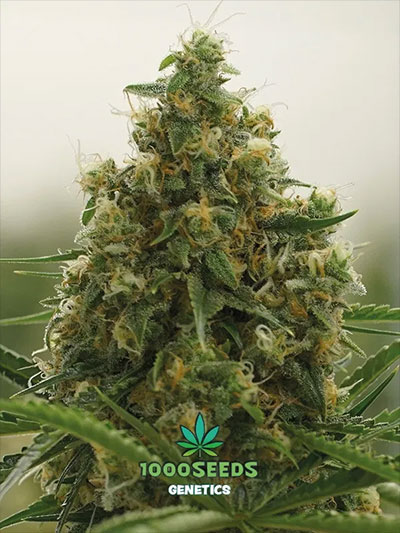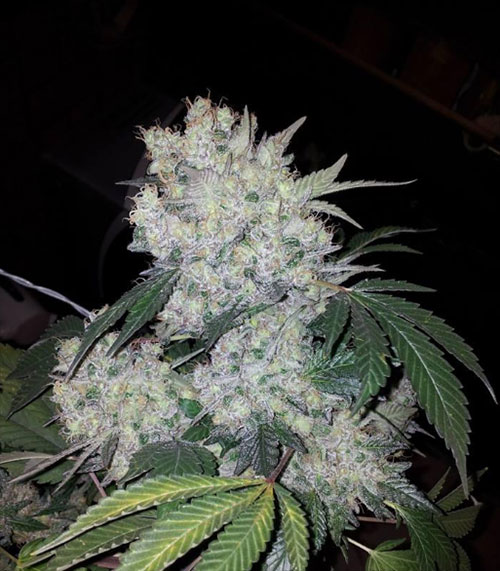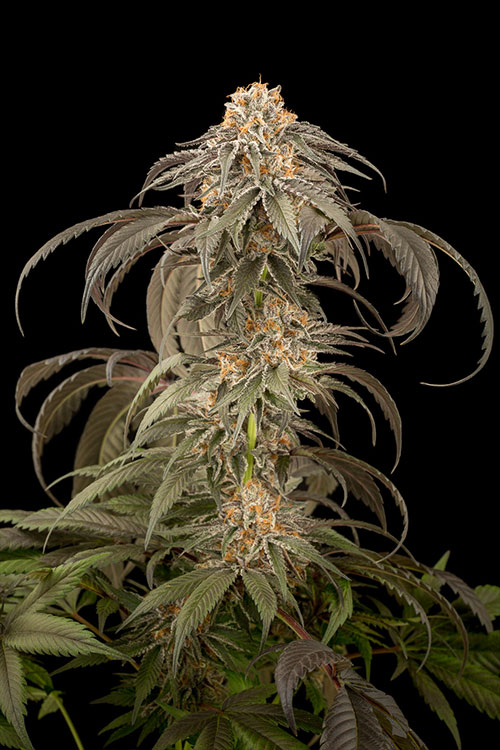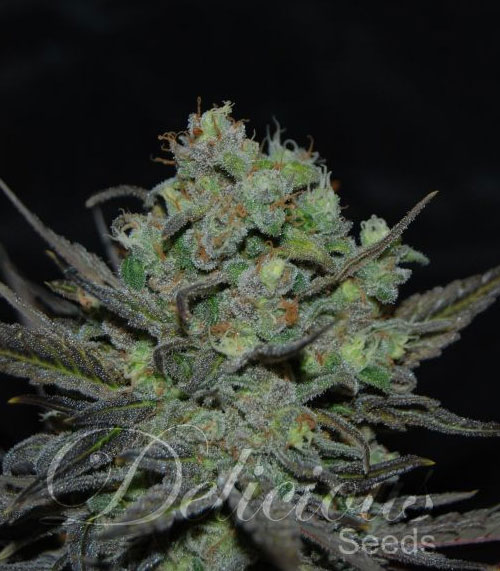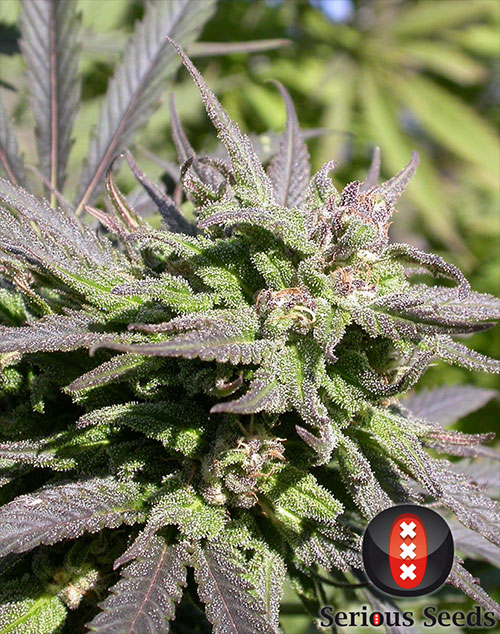Successfully mastering wintergrows

Successful indoor cultivation in winter
When growing indoors in winter, there are a few points to consider so that the plants can successfully complete their cycle and reward the grower with an abundant harvest. With a little background knowledge and a few simple measures, indoor growing in winter is often easier than in summer.
The right temperature
The ideal temperature in the grow room is between 22° and 24° C during the day and between 15° and 21° C at night. At night, the temperature in the grow room can even drop to 8° C without any further adverse effects on the plants.
-
Ideal temperature in the growing room during the day: 22° to 24° C
-
Ideal temperature in the growing room at night: 15° to 21° C
Below 15° C, however, problems with the humidity increase, mould or other fungal diseases spread quickly. Therefore, the temperature should be constant at night (when the light is off) and should not be below 15° C.
If the temperature during the day is above 29° C, growth may be delayed or even stopped. An ideal and constant temperature promotes healthy and fast growth of the plants. Make sure that there is no heater in the direct vicinity or that a fan heater is constantly blowing on the plants.
Temperatures below 0° C destroy the plant cells and thus the whole plant. In any case, avoid frost in the cultivation room as well as too strong temperature fluctuations.
Too cold air coming into the grow room from outside can also cause slowed growth. At the same time, cannabis plants need a lot of oxygen for their development and healthy growth. In fact, the cells of the cannabis plant need as much oxygen as human cells. For best results, the air should have an oxygen content of at least 20%.
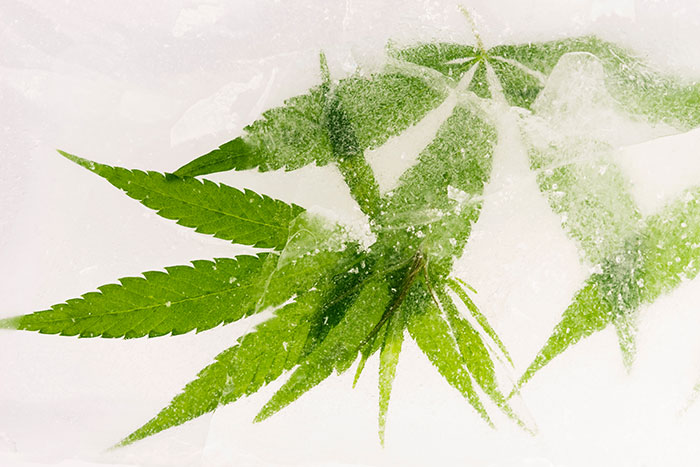
Too low temperatures or even frost will severely damage the plant and can kill it.
A constant supply of fresh air and at the same time no fresh air that is too cold can be a tricky thing in winter in some regions. You may want to direct fresh air into a heated anteroom before it enters the grow room, so that it can warm up a little first. During the winter period, it is very important to regularly check the temperature in the grow room.
A Thermohygrometer helps you to check the humidity and the room temperature and to optimise them if necessary. Sodium vapour lamps radiate a lot of heat and thus heat the growing room. In winter, this is a positive side effect, but you can only benefit from it during the light hours. At night it can quickly get too cold. The same applies to LED lamps, which hardly give off any heat. If the grow room is not in a heated flat or the grow tent is not in a heated room, an additional heater is often necessary. Electric devices such as fan heaters can be controlled easily and constantly, but they consume a lot of energy and are expensive to run. Stoves that run on gas and have an open flame should really only be operated under supervision and consume a lot of oxygen. In addition, gas bottles are needed for this and it is not really practical. A good wood-burning stove, pellet stove or the advantage of central heating are the best solutions to keep the growing space warm enough even in winter. Always make sure that there is a sufficient supply of fresh air. The positive thing is: It is always much easier and cheaper to heat a grow room and bring it to the right temperature in winter than to have to cool it down in summer.
Extra tip:
With the Rod heater (also called Heizwurst by insiders) you can additionally heat your small grow room or grow tent and keep it at the right temperature. In connection with the Tempcon or another temperature controller you can easily and automatically keep the temperature in your grow room at the desired level.
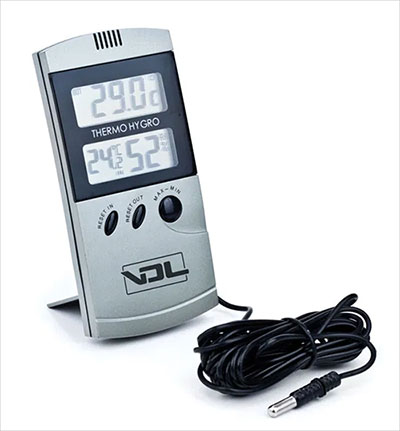
If the temperature in the grow room gets too low, problems with the relative humidity arise. The air can hold different amounts of water depending on the temperature. The warmer it is, the more moisture the air can hold. Cold air, on the other hand, can only hold a small amount of moisture. If the temperature in the grow room drops, the humidity rises at the same time and begins to condense. The condensed moisture settles on the surfaces in the grow room and on the leaves and flowers of the plants.
The ability of the air to retain moisturedoubles with every 10° C rise in temperature. If the temperature difference from day to night is more than 8° C, additional heating must also be used to keep the temperatures sufficiently constant.
-
Ideal humidity for seedlings and during the growing phase: 60-70%.
-
Ideal humidity during flowering: 40-60%.
If it is not possible to keep the air humidity at an ideal and stable level, it makes sense to use an additional Dehumidifier additional dehumidifier. The dehumidifier should be designed for the size of the growing space. These units come in different sizes with varying power and capacity. Like temperature, constant and ideal humidity contributes to healthy plants and high yields.
Too much humidity in the grow room can slow down the growth of the plants. It will also almost certainly lead to mould, mildew or other fungal diseases.
If the humidity is too high and the temperature too low, harmful fungal diseases such as mildew or mould will quickly appear.
Measures to be taken in the event of excessive humidity:
- Increase the temperature in the cultivation room permanently or bring it to an ideal level. (-> heat)
- Use a dehumidifier with a sufficient capacity.
- Use an exhaust fan with sufficient capacity, possibly replace it with a more powerful one.
Humidity too low
In some regions, winter is one of the driest months. The incoming air is cold, but at the same time very dry. If this air then comes together with the warm air in the grow room, it can happen that the humidity falls below the optimal level. In this case, you can use a humidifier to keep the humidity at the desired level. Too low humidity is rarely a problem in winter.
When you grow cars...
If you grow autoflowering plants on a windowsill, you will have much smaller successes than under a highly potent plant light, but you can optimise your results by using an additional CFL light or an energy-saving small LED in the winter time. In winter, sunlight and light hours are not sufficient for proper flower development. Even though automatics are not photoperiodic, they will thank you with more yields if they receive extra light.
Automatics can be exposed 24 hours a day. When mounted with an NDL, this solves the cold problem in many cases. However, it costs quite a bit of money to run the sodium vapour lamp 24 hours a day. It can be just as expensive to put an additional heater into operation. Weigh up what is the best option in your case.
The right genetics
Some cannabis strains are known for their ability to grow well in the harshest conditions and cooler temperatures. This ability to do so is rooted in their genetics. However, keep in mind that even these strains will suffer and perform poorly if the conditions go too far from ideal.
Especially autoflowering strains are suitable for growing in cooler grow rooms. They can handle low temperatures well and are ready to harvest quickly.
5 cannabis strains that do particularly well in cold climates:
Afghan Skunk
Afghan Skunk by 1000Seeds Genetics is a robust, low-maintenance cannabis strain that copes well with colder temperatures and has a high potency. When the nights are a bit cooler, some plants even develop a beautiful reddish or purple colouring.
It is resistant to mould and other fungal diseases. It is also ready for harvest after 7-8 weeks and has a compact size. Indoors she delivers high yields of 550g/m².
White Widow
White Widow is a classic that is famous worldwide and still highly appreciated by many growers. The strain is easy to grow, also suitable for beginners and also has numerous medicinal properties. White Widow is extremely hardy and does not forgive too much temperature fluctuations.
Purple Afghan Kush by Dinafem
With its stocky growth and short flowering time, Dinafem is a good choice for indoor growing. Purple Afghan Kush of Dinafem is a good choice for indoor growing. It grows only about 70-90 cm tall and can thus be managed well even in smaller grow rooms. Thanks to its Afghan roots, the strain has a high resistance to mould and other fungal diseases.
Eleven Roses Delicious Seeds
Eleven Roses was developed to take the award-winning Black Rose even further. By crossing a Sugar Black Rose with an Appalachian Kush
Appalachian Kush, a potent, hardy and extremely resin-producing strain has been created. It is a highly mould resistant cannabis strain with a high THC content.
Biddy Early by Serious Seeds
Biddy Early is also a classic and known for its high resistance to mould, heavy humidity and cold. When the temperatures drop a little in the flowering period, the flowers and leaves of the variety develop fantastic purple tones.
It is easy to grow and ready for harvest after 55 days of flowering. It has a distinct sativa flavour in its growth and especially in its vigour. Nevertheless, she copes well with cooler temperatures.
Black Cheese by Big Buddha Seeds
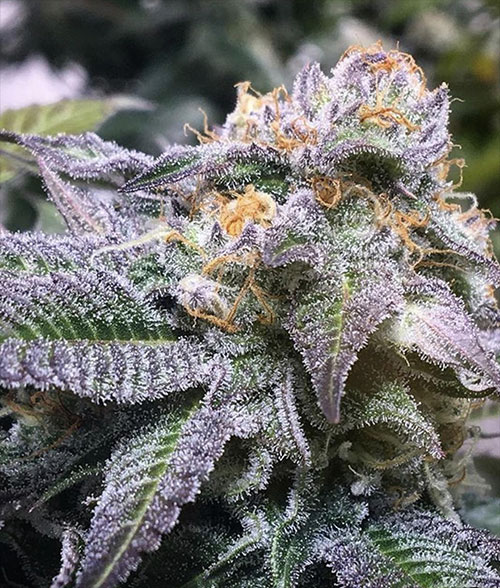
Black Cheese is a very dark cannabis strain with a huge headbud. The indica dominant strain is very potent, high yielding and also extremely resistant to mould and external stress.
There are many other excellent cannabis strains that stand out for their high resistance to mould and fungal diseases, making them particularly suitable for growing in cooler temperatures. Browse through our Seedshop and you will find many more strains that are perfect for growing in winter.







